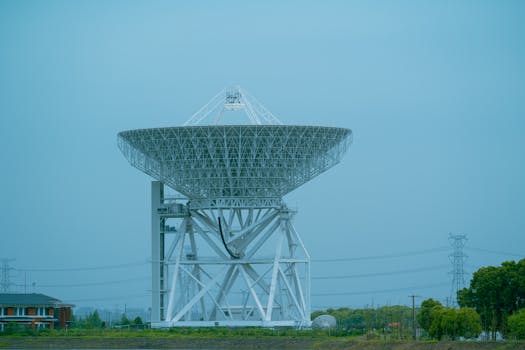
Harnessing the Skies: New Technologies Transforming Satellite Communications
Harnessing the Skies: New Technologies Transforming Satellite Communications is revolutionizing the way we communicate. With the increasing demand for global connectivity, satellite communications have become a vital component of modern telecommunications. The latest advancements in satellite technology have enabled faster, more reliable, and more efficient connections, transforming the way we live, work, and interact with each other.
Introduction to Satellite Communications
Satellite communications involve the use of artificial satellites orbiting the Earth to transmit and receive signals. This technology has been around for several decades, but recent breakthroughs have significantly improved its capabilities. Satellites can provide coverage to remote and underserved areas, where traditional communication infrastructure is limited or non-existent. They can also offer backup connectivity during natural disasters or network outages, ensuring that critical communications remain available.
Advancements in Satellite Technology
Several new technologies are transforming the satellite communications landscape. One of the most significant advancements is the development of High-Throughput Satellites (HTS). These satellites use multiple spot beams to increase capacity and reduce latency, enabling faster data transfer rates and more efficient use of bandwidth. Another innovation is the use of phased array antennas, which allow for more precise beamforming and increased flexibility in satellite operations. Additionally, satellite constellations are being deployed to provide global coverage and reduce latency, with companies like SpaceX and OneWeb launching thousands of small satellites into low-Earth orbit.
Impact of New Technologies on Satellite Communications
The impact of these new technologies on satellite communications is significant. With HTS and phased array antennas, satellite operators can offer higher-speed connections and more flexible services, enabling a wider range of applications, from broadband internet access to IoT connectivity. Satellite constellations are also changing the game, providing global coverage and reduced latency, which is critical for real-time communications and applications like video streaming and online gaming. Furthermore, the increased capacity and efficiency of new satellite technologies are driving down costs, making satellite communications more competitive with traditional fiber-based networks.
Future of Satellite Communications
The future of satellite communications looks bright, with ongoing innovations and investments in new technologies. As the demand for global connectivity continues to grow, satellite communications will play an increasingly important role in meeting this demand. With the development of new satellite constellations, the use of advanced technologies like artificial intelligence and machine learning, and the integration of satellite communications with other networks, such as 5G and fiber optic networks, the possibilities for satellite communications are endless.




